 How cheering it is, after the big meltdown of a 50-degree day mid-week, to see the garden re-emerge and poke its head out of the disappearing snowpack. For the first time in several months, the small shrubs, cement statuary of rabbits and hedgehog, the spindly rosebushes and silver-sage lavender branchlettes, the amber pine needle mulch on the flower beds, all have doffed their thick snow blankets and begun to return the garden to view.
How cheering it is, after the big meltdown of a 50-degree day mid-week, to see the garden re-emerge and poke its head out of the disappearing snowpack. For the first time in several months, the small shrubs, cement statuary of rabbits and hedgehog, the spindly rosebushes and silver-sage lavender branchlettes, the amber pine needle mulch on the flower beds, all have doffed their thick snow blankets and begun to return the garden to view.Sunday inaugurated the 2009 gardening year by being the first day of work in the garden. Or first hours would be more accurate, given that after two hours in the 29-degree temperature, the feet were so thoroughly chilled they made the hands down-tools, and strode up the path and back into the warmth indoors. Cold weather or not, the sky calendar of moon and stars dictated it was the best time to prune trees and shrubs, and really, this celestial command was happily obeyed. Though it was a shivery, nose-running two hours, it felt excellent to be abroad and at work in the garden again, with the soft, tempered warmth of the winter sunshine like a poultice on the face.
The goals of the pruning were to stimulate this year's growth, fruiting and flowering, to remove crossed, dead and unhealthy branches, and to shape and cut back branches going in unwanted directions. The young Fuji apple tree was the first customer for the clippers, as apple trees need sharp shearing during their youth if they are to mature into strong, fruit-bearing grown-ups. During this initial sally upon the garden's shaggy quarters, however, it quickly became apparent that not quite as much cutting back as recommended was going to be done. While I have no qualms about hacking out dead matter from the garden, it is extraordinarily difficult for this gardener to slice into living, apparently healthy growth and terminate it. In part, perhaps this cowardice is because all the inhabitants of the garden are still in their youth and on the small side. The vision is for the garden to be big, busting out all over, arms spread in luxurious, strapping growth, so even when one knows it will yield long-term horticultural dividends, it just seems wrong to assault and reduce the height and breadth the trees and shrubs have attained thus far in their short lives. So faint-heartedness and fond attachment to the progress of the garden denizens somewhat stayed the hand wielding the shears. The final result hopefully found a reasonable, efficacious balance between the cutting which could have been done, and that which the gardener deemed acceptably non-violent.
After the apple tree got its moderate trim job, it was on to the Chicago lustre viburnum, the American high bush cranberry, the diablo ninebark, and the red-twig dogwood shrubs, to remove just those branches rubbing against others, and a few offshoots encroaching into bordering areas. With all the leaves gone for winter, it's very easy to inspect and evaluate a tree or shrub, to spot problematic growth, and to see its silhouette and shape in full. The only troubling discovery was a barnacle-like, rock-hard growth about midway up a single branch on the apple tree, and a matching growth on a single branch of the red oak that is the next-door neighbor to the apple. This growth looks suspiciously like some type of fungal parasite, and will be taken to the nearby Sleeping Bear Dunes park headquarters for identification by the arbor and botany experts. All national parks and university extension services have these resident founts of knowledge on staff, and are a tremendous free source of information for the amateur gardener.
Next in line for barbering were the rosebushes, which also got a scaled down pruning this year, considerably less than the one-third cutback of prior winters. Jim, the head gardener at the local Wildflowers garden shop, also describes himself as “not a big fan of pruning,” and provided the knowledge that only hybrid tea roses really require a good cut-back each spring. Shrub and old-fashioned roses should be pruned only to remove dead stems. Even though spring is still a couple of moons away and the rosebushes remain in dormancy, it is obvious to the eye which boughs are alive by their ruddy, reddish-greenish hue, as opposed to the dull dark brown and gray tints of dead boughs. Where color of the bark is not so conspicuous, an easy method of determining life within a branch is to scrape a small portion of bark away with the fingernail. Living branches will have a pale green color just below the surface bark, while dead ones will be dry, gray and white.
The last tasks completed entailed snipping off the dead, collapsed leaves of the globe thistle, daylilies and iris, the dried and largely denuded seedheads of red carpet sedum, and the long, sprawling fronds of switchgrass and fountain grass which had been brought to their knees by the weight of the snow. The remaining pruning and clear-up – the Russian sage, blue oat grass and miscanthus silver grass – await another sunny day, when the temperatures are more amenable to bare-handed toil. Darling, unpredictable spring can't be too many weeks away now, and an afternoon spent tidying the garden proves a very satisfactory snippet of the good green season of outdoor occupation soon to come.
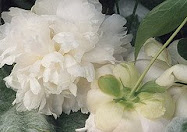


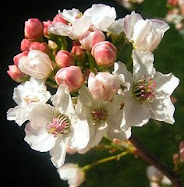
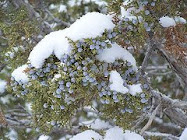

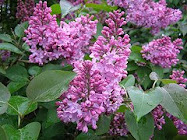
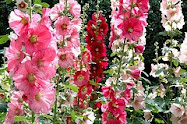
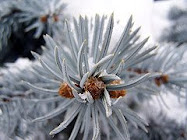
2 comments:
Fabulous garden musings! Keep up the insight and wit! I look forward to the next installment. Signed, your fan
Thanks so much, I'm very happy to entertain. We really can't entertain one another too much, in my book.
Post a Comment